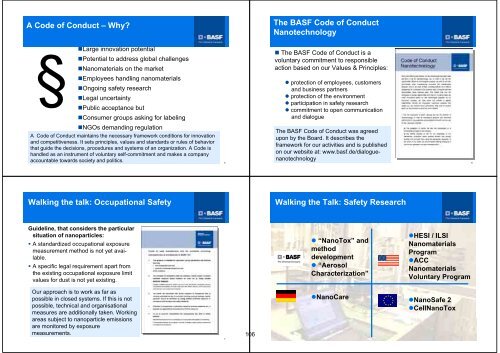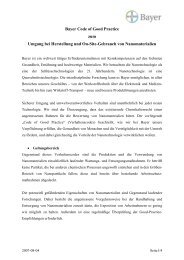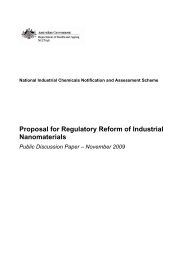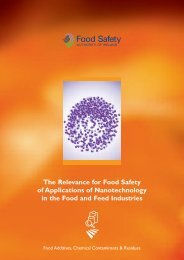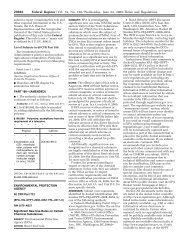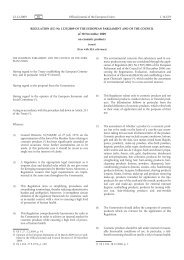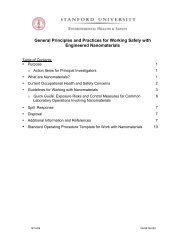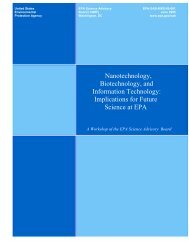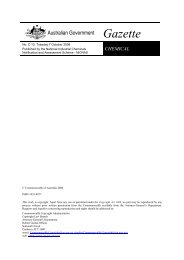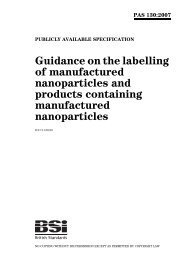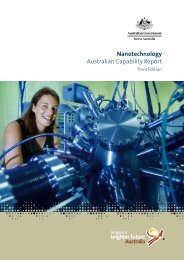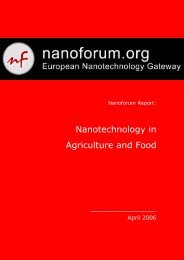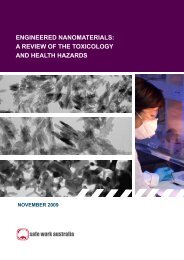Nanotechnology - Nanotech Regulatory Document Archive - Arizona ...
Nanotechnology - Nanotech Regulatory Document Archive - Arizona ...
Nanotechnology - Nanotech Regulatory Document Archive - Arizona ...
You also want an ePaper? Increase the reach of your titles
YUMPU automatically turns print PDFs into web optimized ePapers that Google loves.
A Code of Conduct – Why?<br />
Large innovation potential<br />
Potential to address global challenges<br />
Nanomaterials on the market<br />
Employees handling nanomaterials<br />
Ongoing safety research<br />
Legal uncertainty<br />
Public acceptance but<br />
Consumer groups asking for labeling<br />
NGOs demanding regulation<br />
A Code of Conduct maintains the necessary framework conditions for innovation<br />
and competitiveness. It sets principles, values and standards or rules of behavior<br />
that guide the decisions, procedures and systems of an organization. A Code is<br />
handled as an instrument of voluntary self-commitment and makes a company<br />
The BASF Code of Conduct<br />
<strong><strong>Nanotech</strong>nology</strong><br />
The BASF Code of Conduct is a<br />
voluntary commitment to responsible<br />
action based on our Values & Principles:<br />
protection of employees, customers<br />
and business partners<br />
protection of the environment<br />
participation in safety research<br />
commitment to open communication<br />
and dialogue<br />
The BASF Code of Conduct was agreed<br />
upon by the Board. It describes the<br />
framework for our activities and is published<br />
on our website at: www.basf.de/dialoguenanotechnology<br />
accountable towards society and politics. 5<br />
6<br />
Walking the talk: Occupational Safety<br />
Guideline, that considers the particular<br />
situation of nanoparticles:<br />
A standardized occupational exposure<br />
measurement method is not yet available.<br />
A specific legal requirement apart from<br />
the existing occupational exposure limit<br />
values for dust is not yet existing.<br />
Our approach is to work as far as<br />
possible in closed systems. If this is not<br />
possible, technical and organisational<br />
measures are additionally taken. Working<br />
areas subject to nanoparticle emissions<br />
are monitored by exposure<br />
measurements.<br />
7<br />
106<br />
Walking the Talk: Safety Research<br />
“NanoTox” and<br />
method<br />
development<br />
“Aerosol<br />
Characterization”<br />
NanoCare<br />
HESI / ILSI<br />
Nanomaterials<br />
Program<br />
ACC<br />
Nanomaterials<br />
Voluntary Program<br />
NanoSafe 2<br />
CellNanoTox<br />
8


